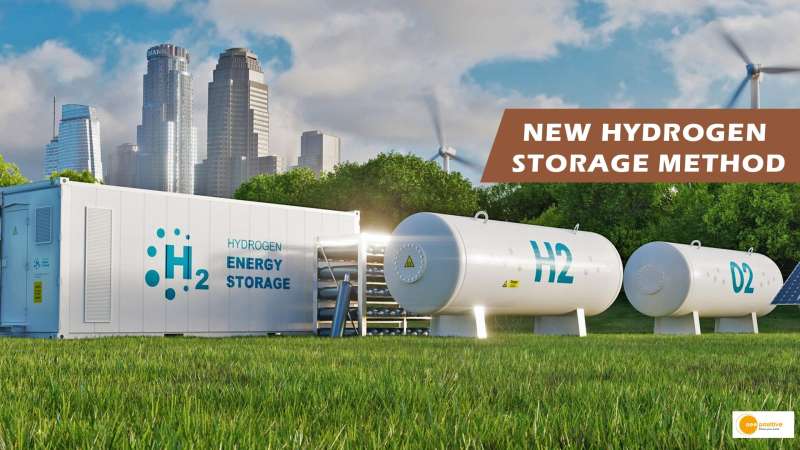

Researchers at Japan’s RIKEN Centre for Emergent Matter Science (CEMS) have made a groundbreaking discovery in the field of hydrogen storage. By identifying a molecule that effectively stores ammonia through a chemical reaction, they have found a safe and convenient approach to storing hydrogen. This discovery could potentially pave the way for a decarbonized civilization with a viable hydrogen economy.
To transition from carbon-based to hydrogen-based energy, it is crucial to find a safe method for storing and transporting hydrogen. Since hydrogen is highly combustible on its own, storing it as part of another molecule is a promising solution. Ammonia (NH3) is an ideal hydrogen carrier as it contains three hydrogen atoms per molecule, with almost 20% of ammonia’s weight being hydrogen.
Ammonia, however, poses challenges due to its highly corrosive nature, making storage and use difficult. Current methods involve liquefying ammonia at extremely low temperatures or using porous compounds, both of which have limitations in terms of capacity and retrieval efficiency.
The Discovery of a Revolutionary Solution
The research team at RIKEN CEMS, led by Masuki Kawamoto, focused on a perovskite called ethyl ammonium lead iodide (EAPbI3). They discovered that this material undergoes a chemical reaction with ammonia at room temperature and pressure, transforming into a two-dimensional layered structure known as lead iodide hydroxide (Pb(OH)I). Through this process, ammonia is stored within the layered structure, providing a safe and cost-effective alternative to traditional methods.
Easy Retrieval and Reusability
Surprisingly, the stored ammonia in ethyl ammonium lead iodide can be easily extracted by gentle heating. The compound undergoes a reverse reaction at a low temperature of 50°C (122°F) under vacuum, converting back into ammonia. This temperature is significantly lower than that required for extraction from porous compounds, making EAPbI3 an excellent medium for handling corrosive gases. Moreover, the perovskite can be reused after the extraction process, allowing for repeated storage and retrieval of ammonia.
Additional Benefits and Future Applications
An interesting aspect of this storage method is the colour change observed in the compound, turning from yellow to white during the reaction. This characteristic opens the possibility of developing colour-based ammonia sensors to determine the stored ammonia quantity. In the short term, this breakthrough offers a safe and efficient storage solution for ammonia, which has various applications ranging from fertilizers to pharmaceuticals and textiles. Looking ahead, the researchers envision this method contributing to a decarbonized society by utilizing ammonia as a carbon-free hydrogen carrier.
Conclusion
The discovery of a safe, easy, and affordable method to store and retrieve hydrogen is a significant step towards a decarbonized future. The perovskite ethyl ammonium lead iodide (EAPbI3) has demonstrated remarkable capabilities in storing ammonia and enabling its effortless extraction. With the potential to revolutionize hydrogen storage, this breakthrough offers promising opportunities for a sustainable hydrogen economy.


